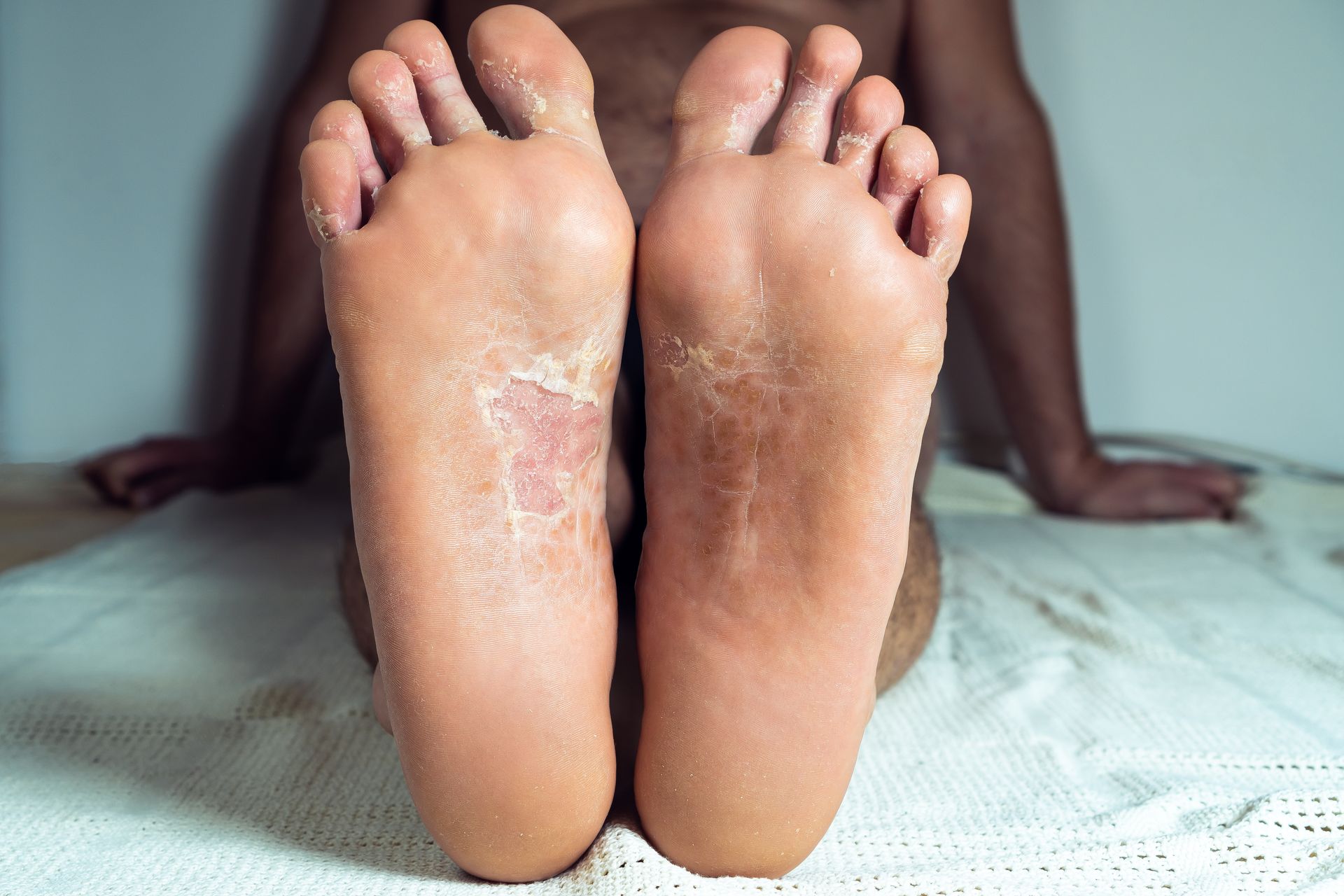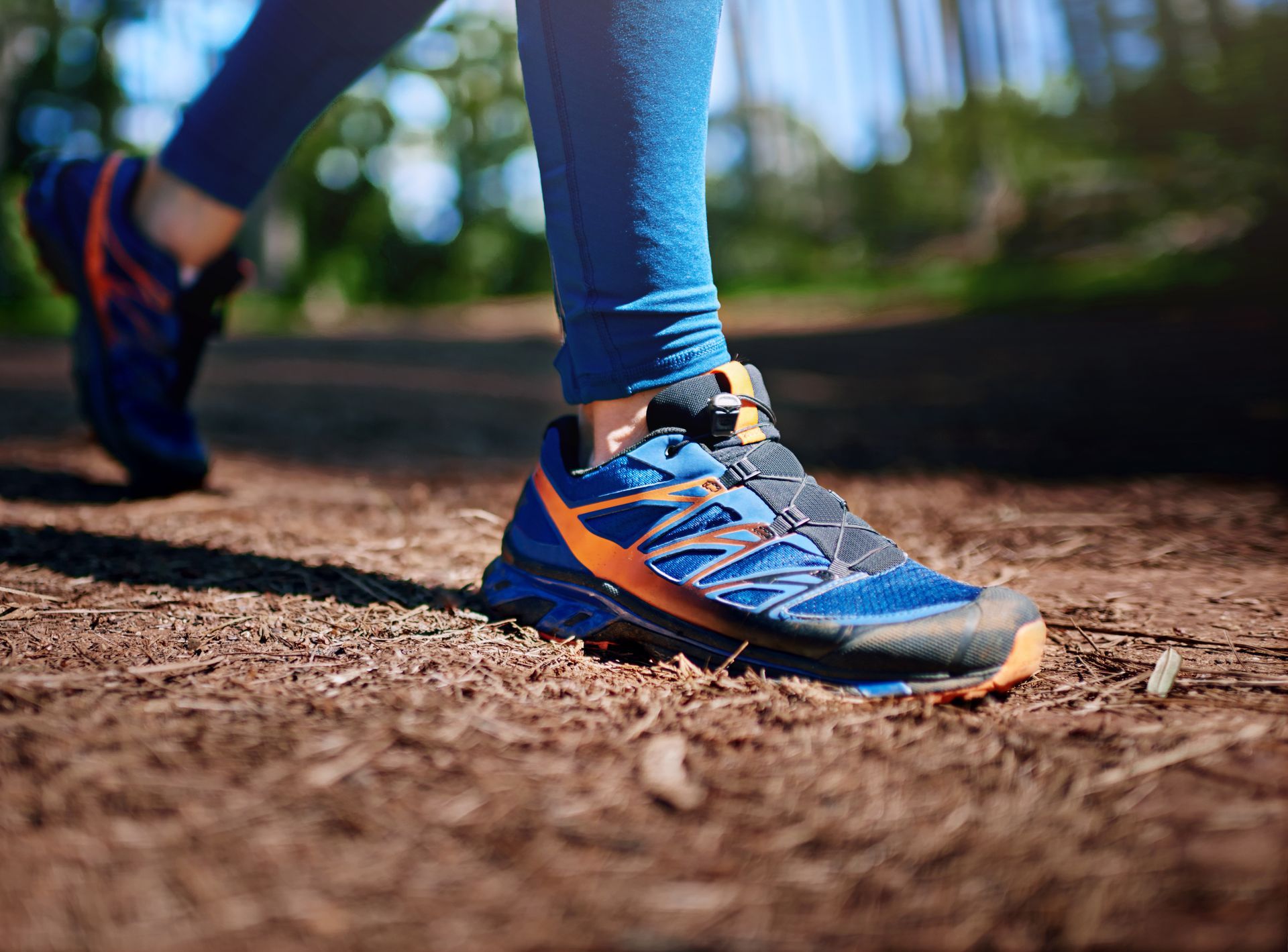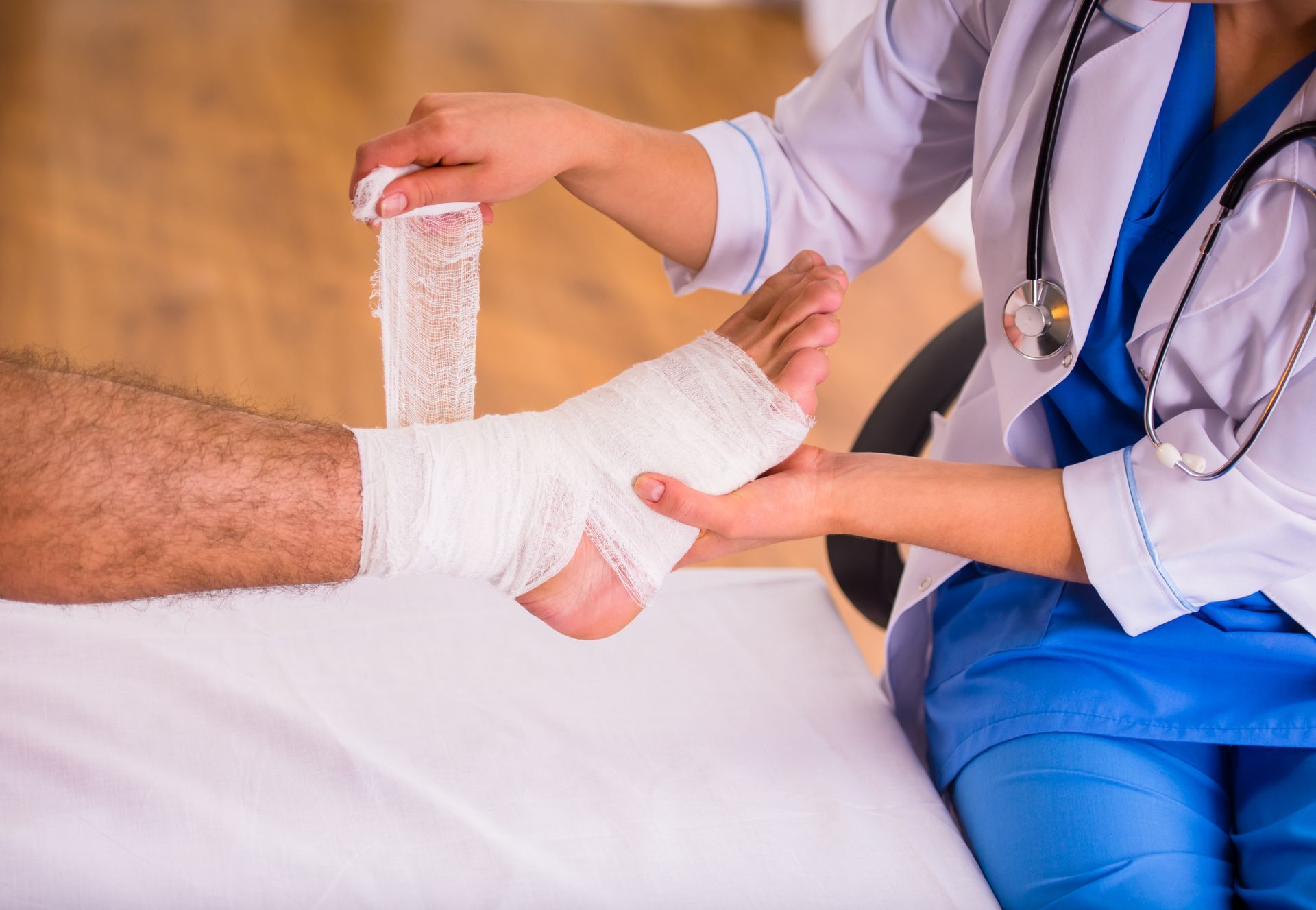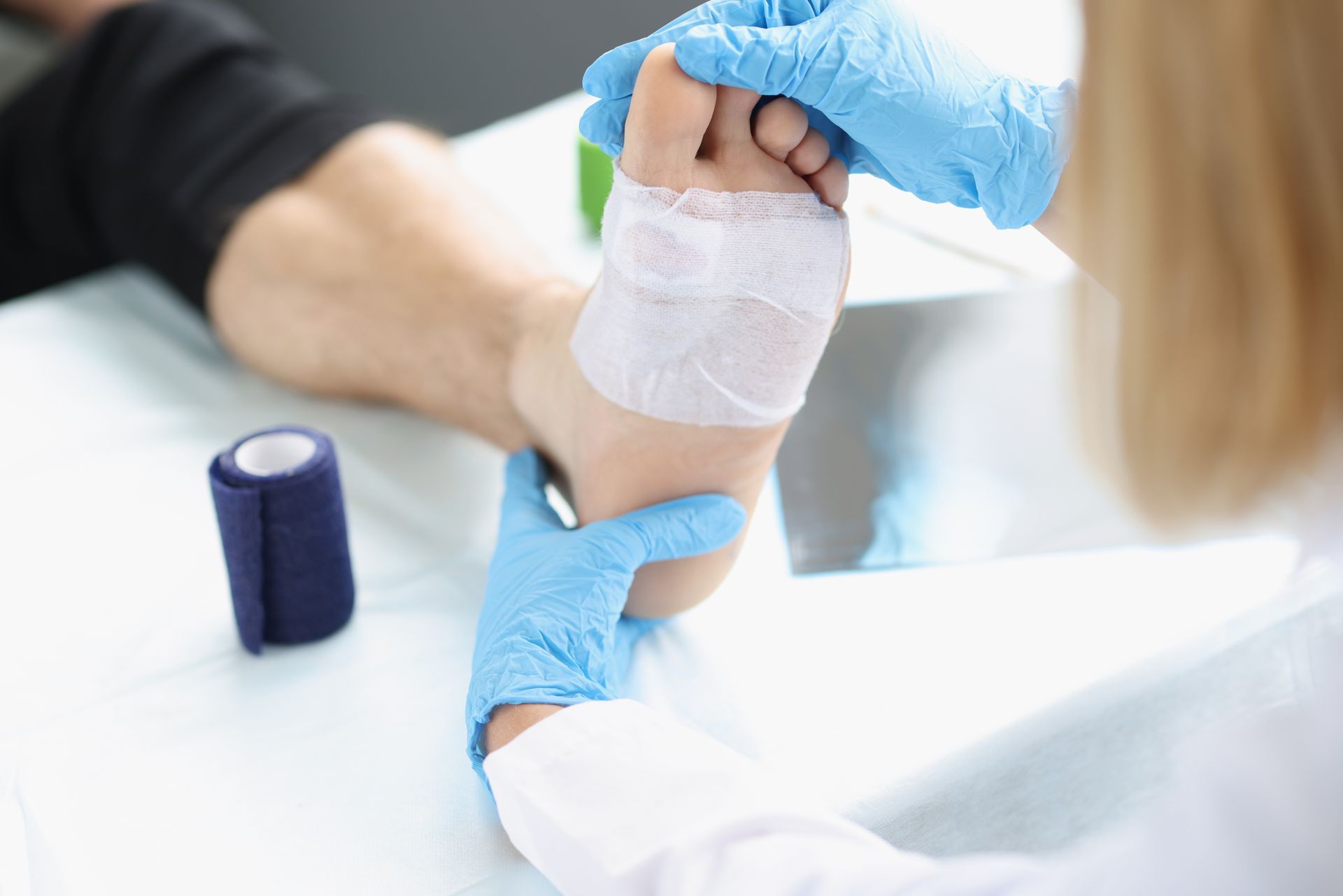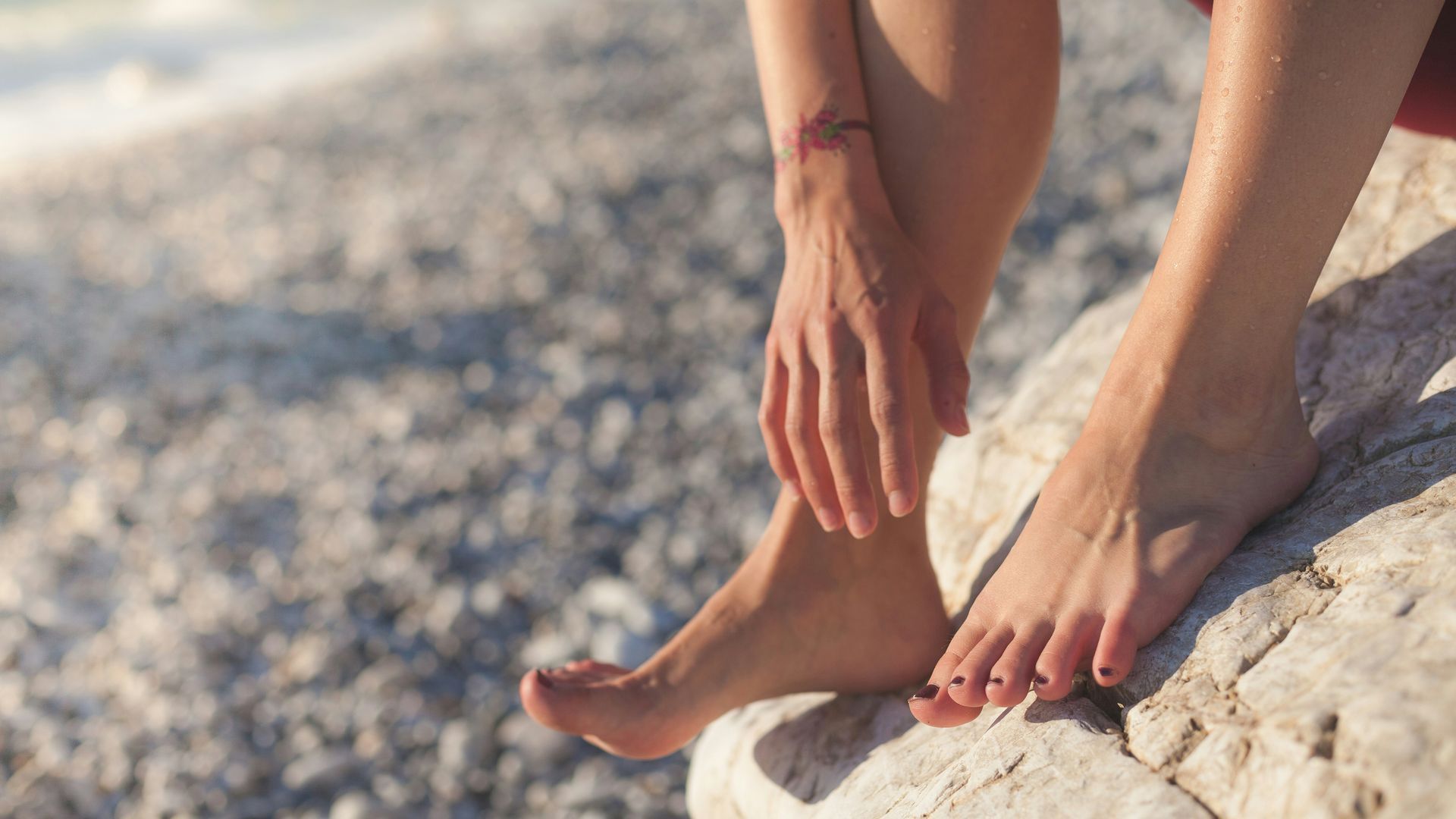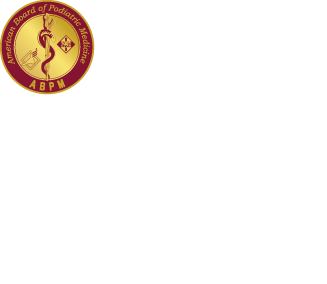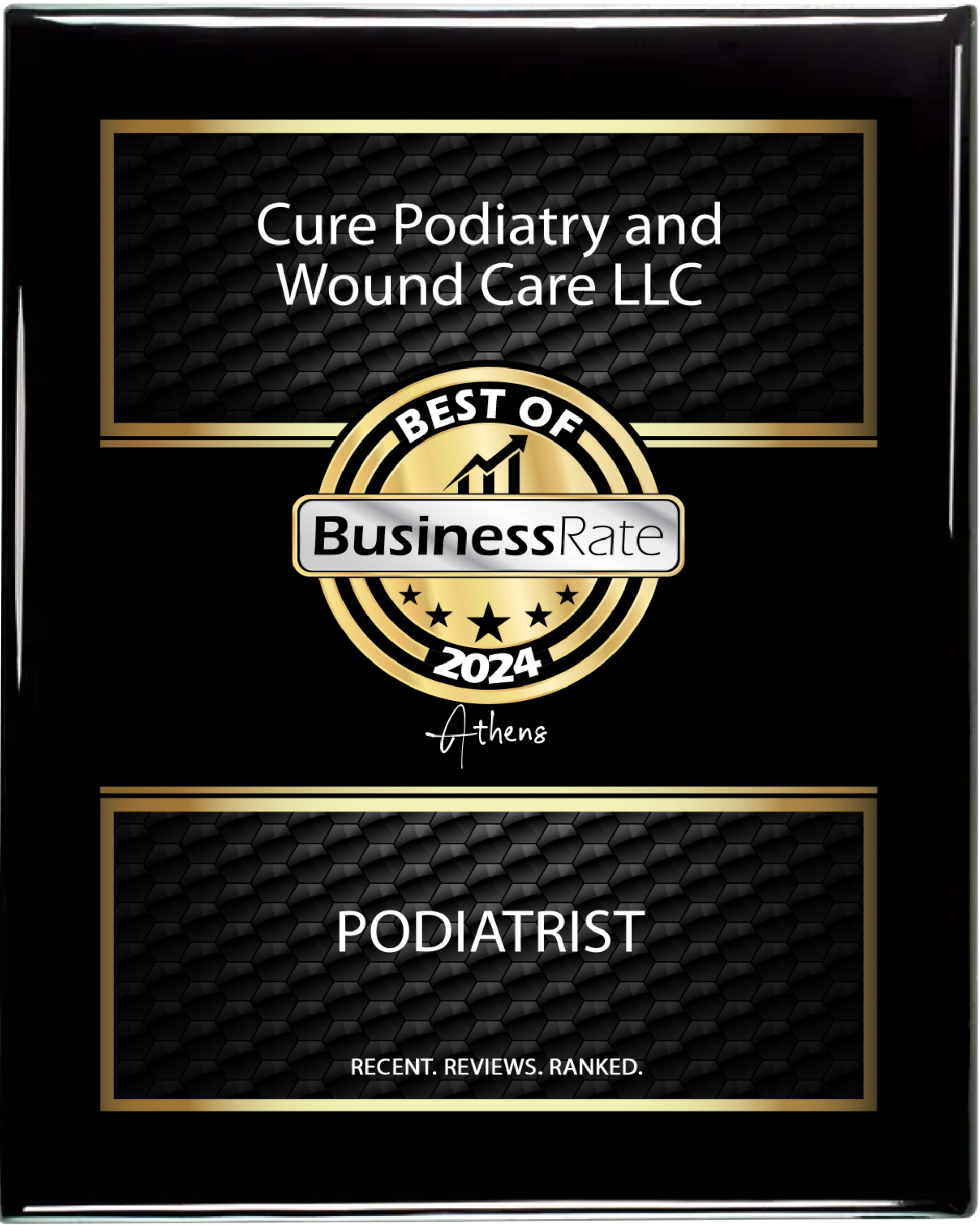What are the Symptoms of Toenail Fungus and Athlete’s Foot?
Toenail fungus and athlete’s foot are common fungal infections that affect the feet. While they are caused by similar organisms and can often occur together, they present with distinct symptoms and affect different areas of the foot. Recognizing these symptoms early can help prevent the infection from spreading and allow for more effective treatment provided by a podiatrist who specializes in wound care in Athens, GA.
Toenail Fungus (Onychomycosis): Symptoms to Watch For
Toenail fungus, medically known as onychomycosis, is a fungal infection that primarily affects the toenails. It typically starts as a small white or yellow spot under the tip of the nail and gradually spreads deeper.
Here are the key symptoms of toenail fungus:
- Discoloration of the Nail
One of the earliest and most noticeable signs is a change in nail color. The nail may turn white, yellow, brown, or even greenish as the fungus progresses. - Thickened Nails
Infected nails often become unusually thick, making them difficult to trim or manage. - Brittle or Crumbly Texture
As the infection worsens, the nail may become brittle, ragged, or crumbly. Pieces of the nail may break off or chip easily. - Distorted Nail Shape
The nail may become misshapen or grow in an abnormal direction, often appearing warped or lifted from the nail bed. - Foul Odor
A mild to strong unpleasant odor can occur due to fungal activity beneath the nail. - Pain or Discomfort
Although not always painful at the beginning, toenail fungus can cause discomfort or pressure, especially when wearing shoes. - Nail Detachment (Onycholysis)
In severe cases, the infected nail may lift away from the nail bed completely.
Toenail fungus can be stubborn and slow to treat. It's often more common in older adults and those with diabetes, circulatory issues, or compromised immune systems.
Athlete’s Foot (Tinea Pedis): Symptoms to Recognize
Athlete’s foot is a fungal skin infection that typically affects the soles of the feet and the spaces between the toes. It’s highly contagious and can spread through direct contact or via contaminated surfaces like locker rooms, showers, and floors.
Common symptoms of athlete’s foot include:
- Itching, Stinging, and Burning Sensations
The most common early symptom is intense itching or burning, especially between the toes or on the soles of the feet. - Redness and Scaling
The skin may appear red, scaly, or dry. In some cases, the affected area may crack or peel. - Cracked or Peeling Skin
As the infection spreads, the skin may become very dry and start to crack, particularly in the webbing between the toes. - Blisters or Ulcers
In some types of athlete’s foot, small, fluid-filled blisters may form. These can burst and lead to open sores or ulcers. - Foul Odor
Like toenail fungus, athlete’s foot may produce a musty or unpleasant smell, especially when sweat accumulates in tight shoes. - Thickened or Discolored Skin
Chronic cases may cause the soles and heels to become thick and discolored.
When to Seek Medical Attention
While over-the-counter antifungal treatments may help in mild cases, persistent or severe symptoms should be evaluated by a healthcare provider. If left untreated, both toenail fungus and athlete’s foot can worsen and even lead to secondary bacterial infections.
People with diabetes, poor circulation, or a weakened immune system should be especially vigilant, as foot infections can escalate quickly and lead to complications.
Call Cure Podiatry & Wound Care for an Appointment
Toenail fungus and athlete’s foot are both common but treatable fungal infections. Early identification of symptoms such as nail discoloration, thickening, itching, or cracked skin is crucial. Maintaining good foot hygiene, keeping feet dry, and using appropriate footwear in public areas can go a long way in preventing these infections. If symptoms persist or worsen, don’t hesitate to consult our healthcare professional for proper diagnosis and treatment options.
Not all wounds need the attention of a specialist, but when a wound doesn’t heal, gets infected, or causes serious pain, it’s not something to ignore. Seeing a wound care specialist early can prevent complications, reduce scarring, and speed up recovery. Whether you're dealing with a diabetic ulcer, a post-surgical complication, or an injury that just won’t heal, our professionals can guide you toward the safest, most effective treatment options for long-term healing and better health.
Cure Podiatry & Wound Care provides quality podiatric care in a family-friendly setting. We pride ourselves in not only diagnosing and treating your wound, but also educating our patients. Dr. Mahzoon, an ABPM Board Certified Podiatrist with extensive experience in wound care, also provides excellent foot and ankle care. We will work closely with your primary care doctor, vascular, infectious disease, and other specialists to formulate the best course of treatment. If you are in need of wound care, contact us today to schedule an appointment.
Cure Podiatry & Wound Care
1135 Prince Ave
Athens, GA 30606
706-405-7773
